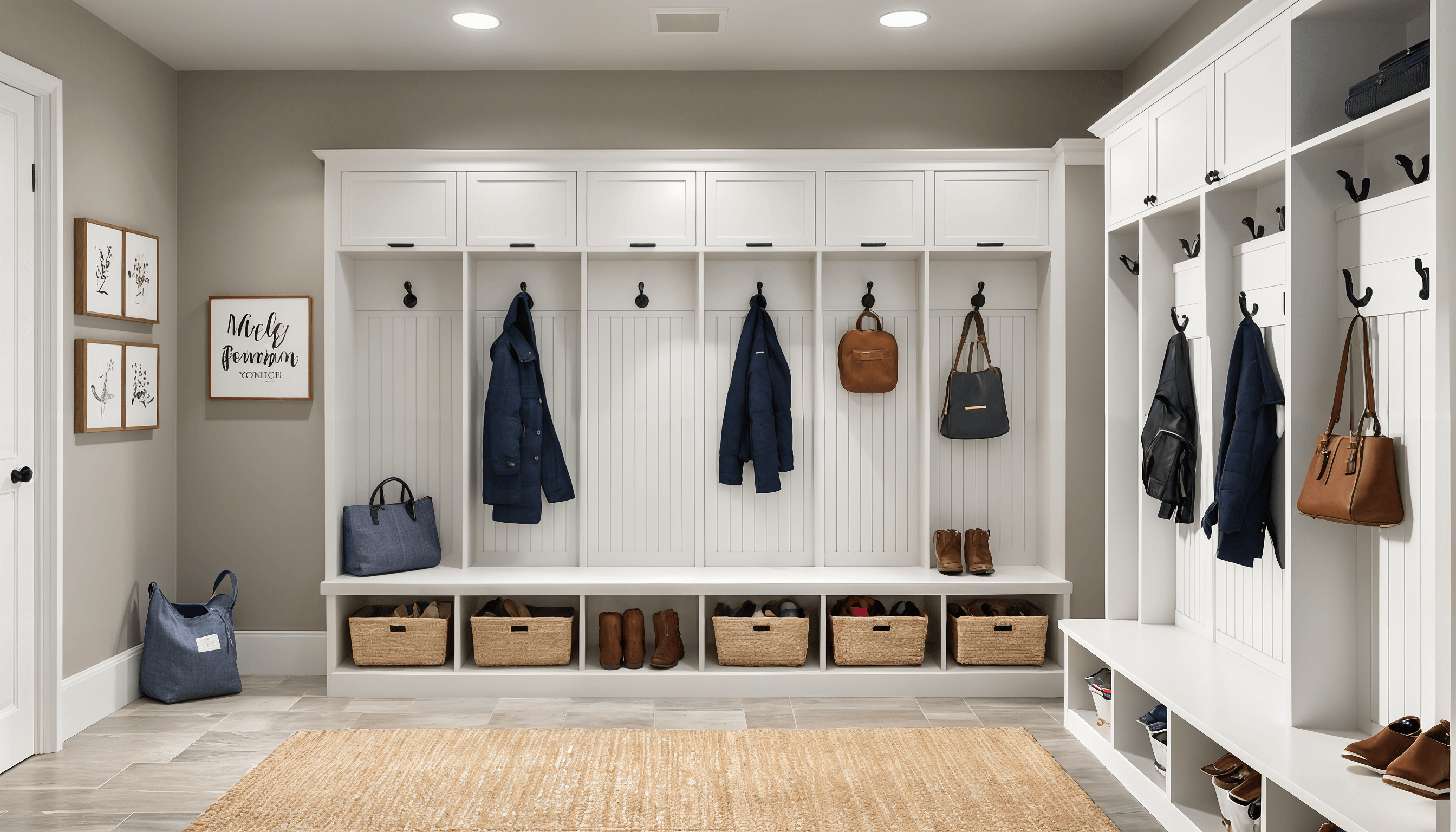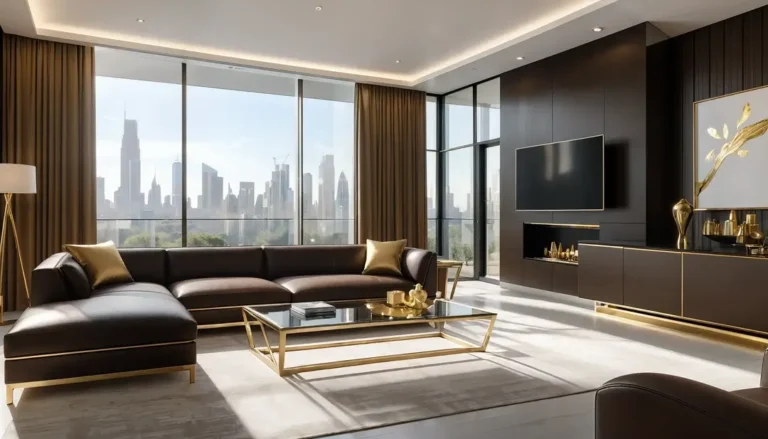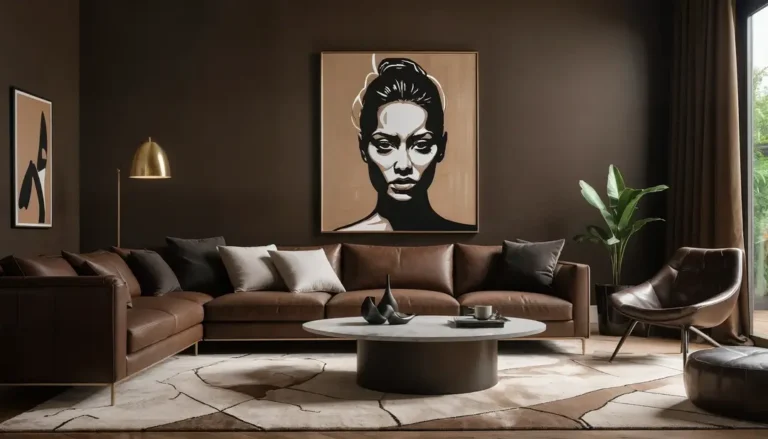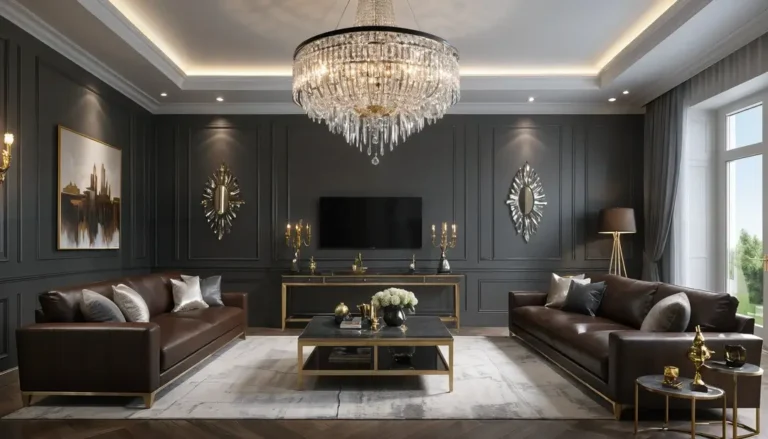In my experience working with homeowners on entryway renovations, I’ve observed that mudrooms often serve as crucial transition zones that can significantly impact daily routines and first impressions. Through various projects, I’ve learned that effective mudroom design typically balances practical storage needs with aesthetic appeal while accommodating the high-traffic, multi-use nature of these spaces.
Note: For any structural modifications, electrical work, plumbing adjustments, or installations mentioned in this article, always consult with licensed professionals to ensure safety and code compliance.
What makes mudroom design particularly important is the space’s role as both a functional workspace and a welcoming entry point. I’ve found that homeowners often struggle with these areas because they typically need to accommodate messy outdoor gear while maintaining attractive environments that reflect well on the home’s overall design.
The key to successful mudroom design often lies in understanding usage patterns, storage priorities, and the relationship between functionality and visual appeal. Effective mudrooms typically provide organized storage for seasonal items while maintaining easy access to daily necessities and creating positive first impressions for visitors.
Here are practical mudroom approaches that often work well in different home environments, based on observations from various renovation projects.
Streamlined Built-In Organization
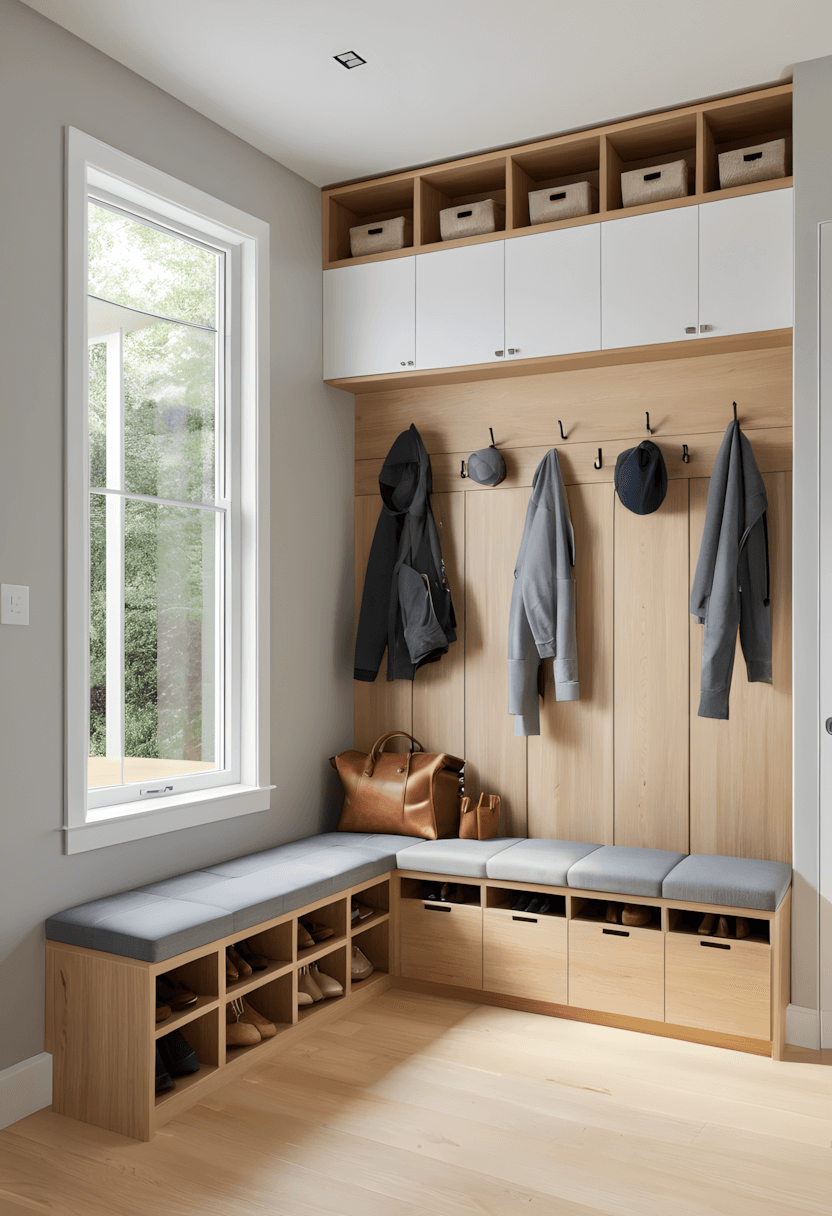
This efficient approach often appeals to homeowners wanting comprehensive storage without visual clutter. Built-in cubbies, hooks, and shelving typically provide designated spaces for various items while maintaining clean, organized appearances.
Design consideration: Neutral colors often create timeless foundations that work with changing seasonal decorations and personal accessories.
Practical benefit: Custom storage often maximizes space utilization while providing specific solutions for different types of outdoor gear and daily necessities.
Industrial-Style Integration
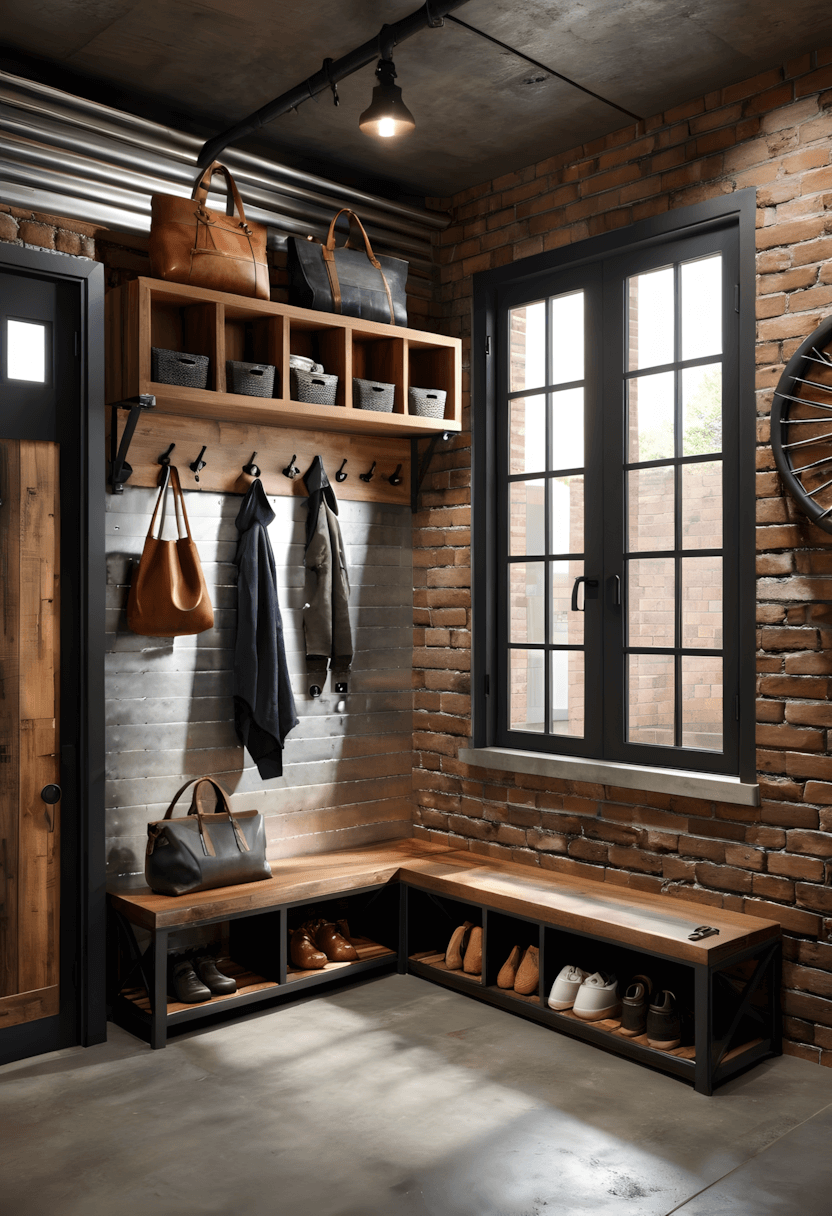
This characterful approach often works well for homeowners appreciating urban, loft-style aesthetics. Metal elements combined with natural wood typically create distinctive environments that feel both practical and intentional.
Material harmony: The contrast between raw metals and warm wood often provides visual interest while maintaining durability for high-use areas.
Design authenticity: Industrial elements often provide genuine character while supporting the heavy-duty storage needs typical in mudroom environments.
Light-Maximizing Shiplap Treatment
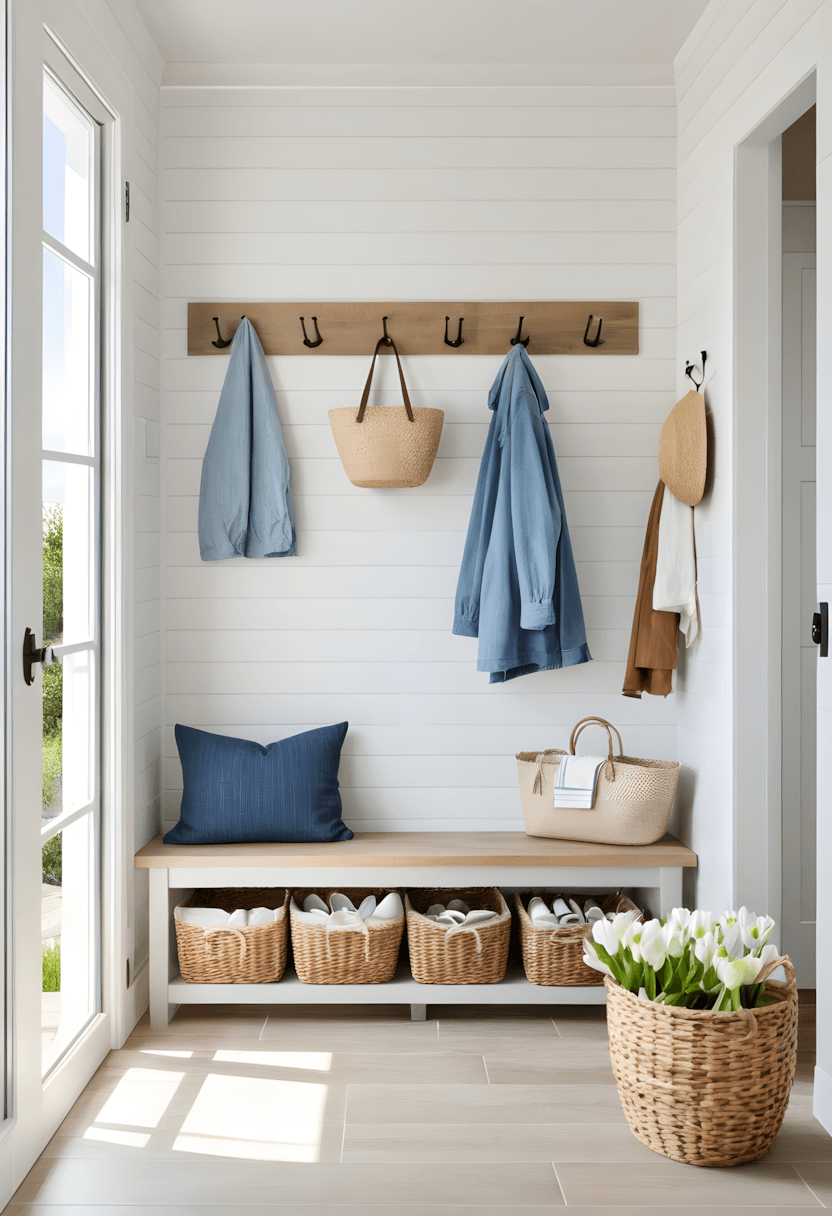
This bright approach often appeals to homeowners wanting to create spacious, airy feelings in compact entryways. Horizontal wood paneling typically adds texture while light colors enhance available illumination.
Design benefit: Coastal-inspired elements often create relaxed, welcoming atmospheres that make daily transitions feel more pleasant.
Practical consideration: Light colors often require more maintenance but provide the open, fresh feeling that makes small spaces more inviting.
Cozy Cottage Character
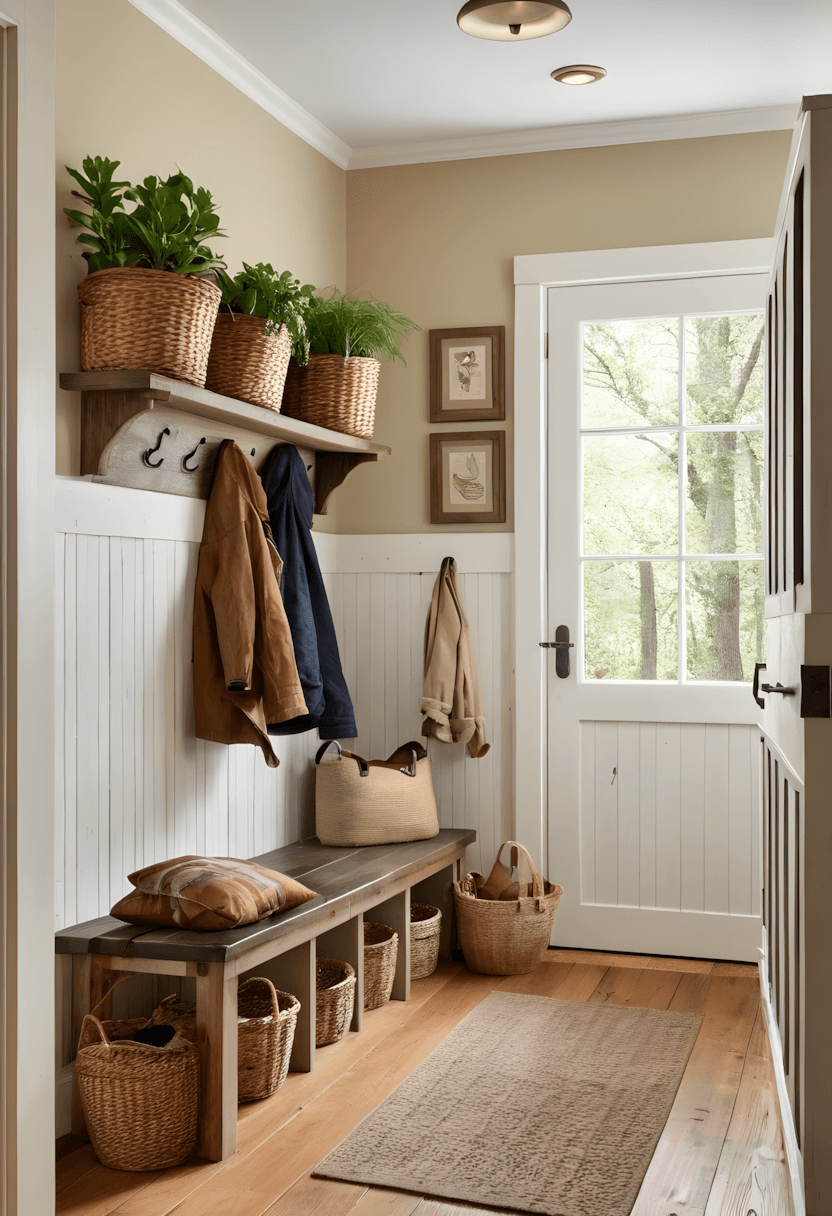
This warm approach often works well for homeowners wanting inviting, lived-in environments. Natural materials and traditional storage solutions typically create comfortable spaces that encourage family use.
Design elements: Woven baskets and weathered wood often provide authentic character while accommodating practical storage needs effectively.
Comfort focus: This approach often prioritizes creating welcoming environments where family members feel comfortable during daily routines.
Farmhouse-Inspired Functionality
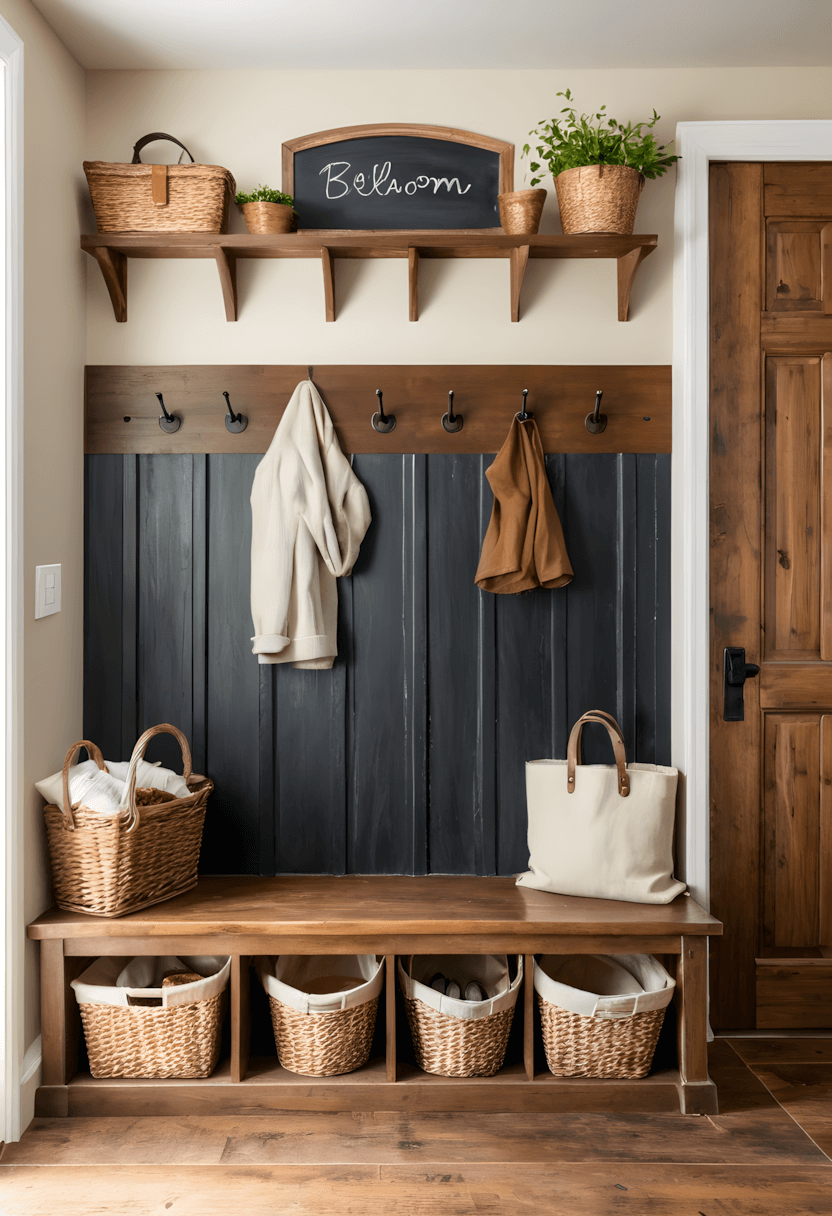
This charming approach often appeals to homeowners appreciating traditional, practical aesthetics. Interactive elements like chalkboard walls typically add personality while serving functional purposes.
Design integration: Traditional materials often provide authentic character while accommodating modern storage and organizational needs.
Family benefit: Interactive elements often encourage family communication while adding practical functionality for daily reminders and organization.
Bold Color Statement
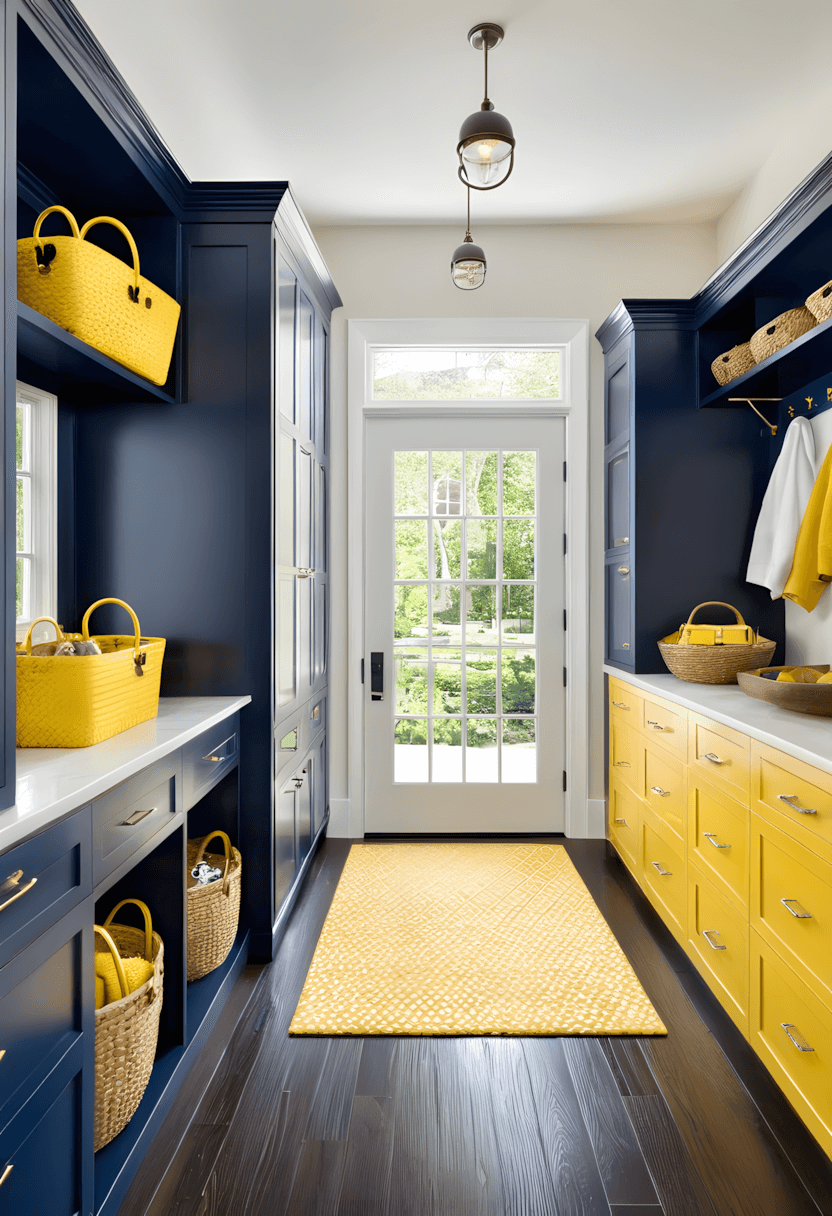
This energetic approach often works well for homeowners wanting to create memorable, personality-filled entryways. Vibrant cabinet colors typically transform utilitarian spaces into welcoming, distinctive areas.
Design confidence: Bold color choices often require commitment but provide unique character that cannot be achieved through neutral approaches.
Balance strategy: Contrasting accessories often help bold base colors feel intentional rather than overwhelming while maintaining visual harmony.
Contemporary Glass Integration
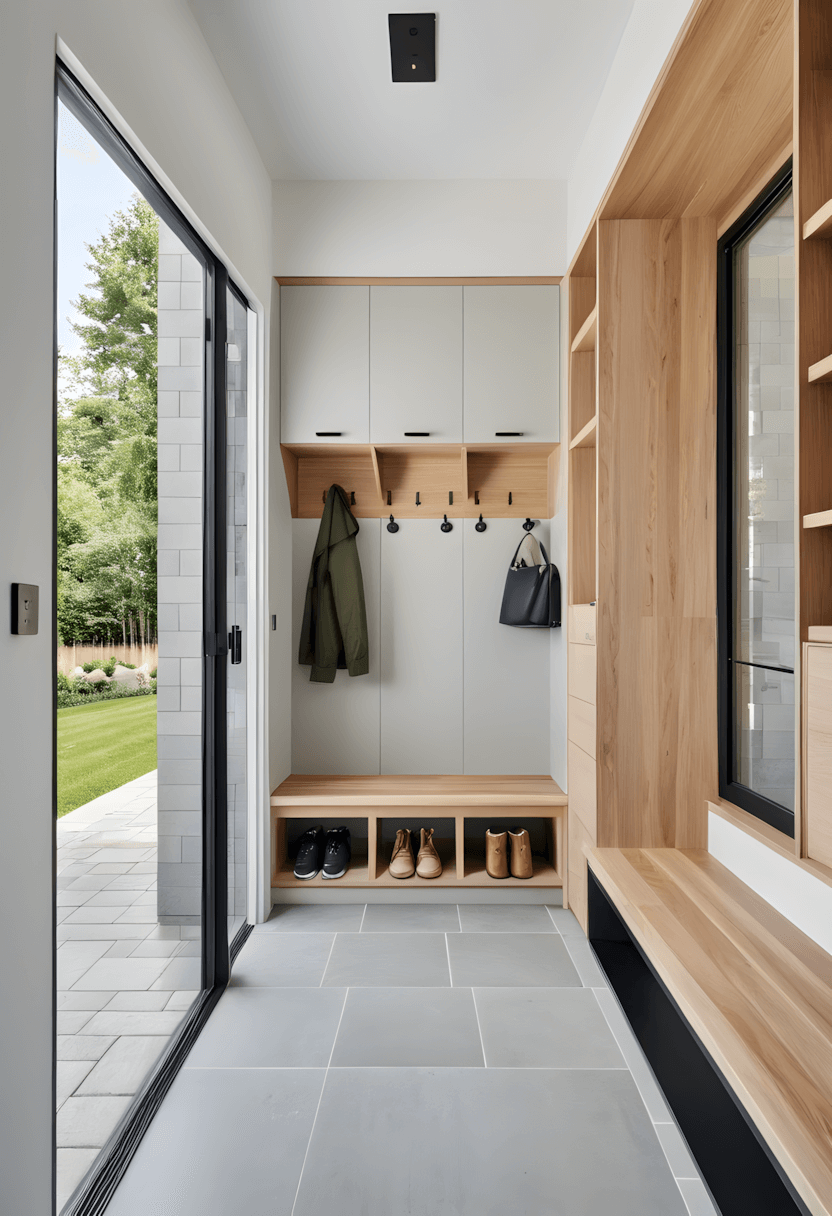
This modern approach often appeals to homeowners wanting sleek, sophisticated aesthetics. Transparent elements typically create open feelings while maintaining contemporary design principles.
Design sophistication: Glass features often provide elegant solutions for storage visibility while maintaining clean, uncluttered appearances.
Light enhancement: Transparent materials often maximize available light while creating impressions of greater space within compact areas.
Traditional Paneled Elegance
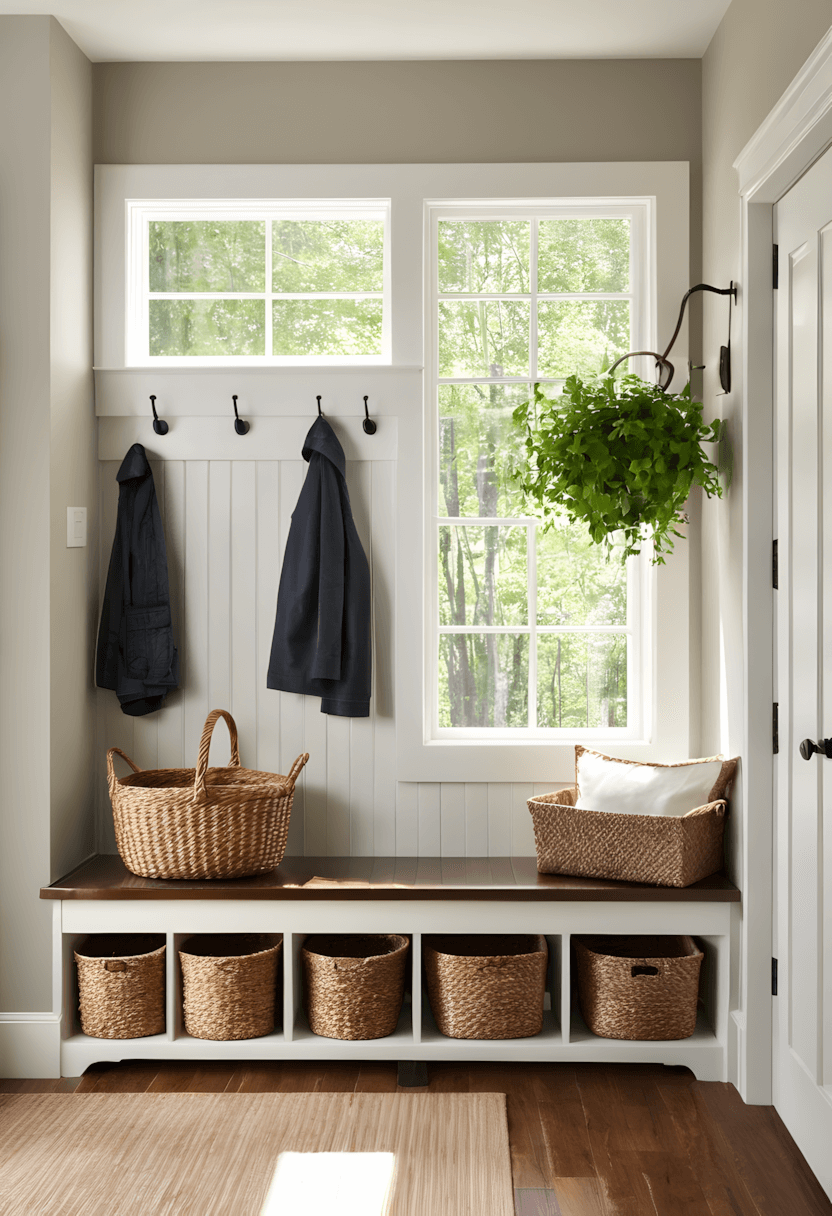
This classic approach often works well for homeowners appreciating timeless, refined aesthetics. Traditional wall treatments typically provide sophisticated foundations for organized storage systems.
Design longevity: Classic paneling often provides lasting appeal that transcends changing trends while accommodating various storage solutions.
Storage integration: Traditional bench seating with storage often combines practical function with period-appropriate style.
Atmospheric Lighting Focus
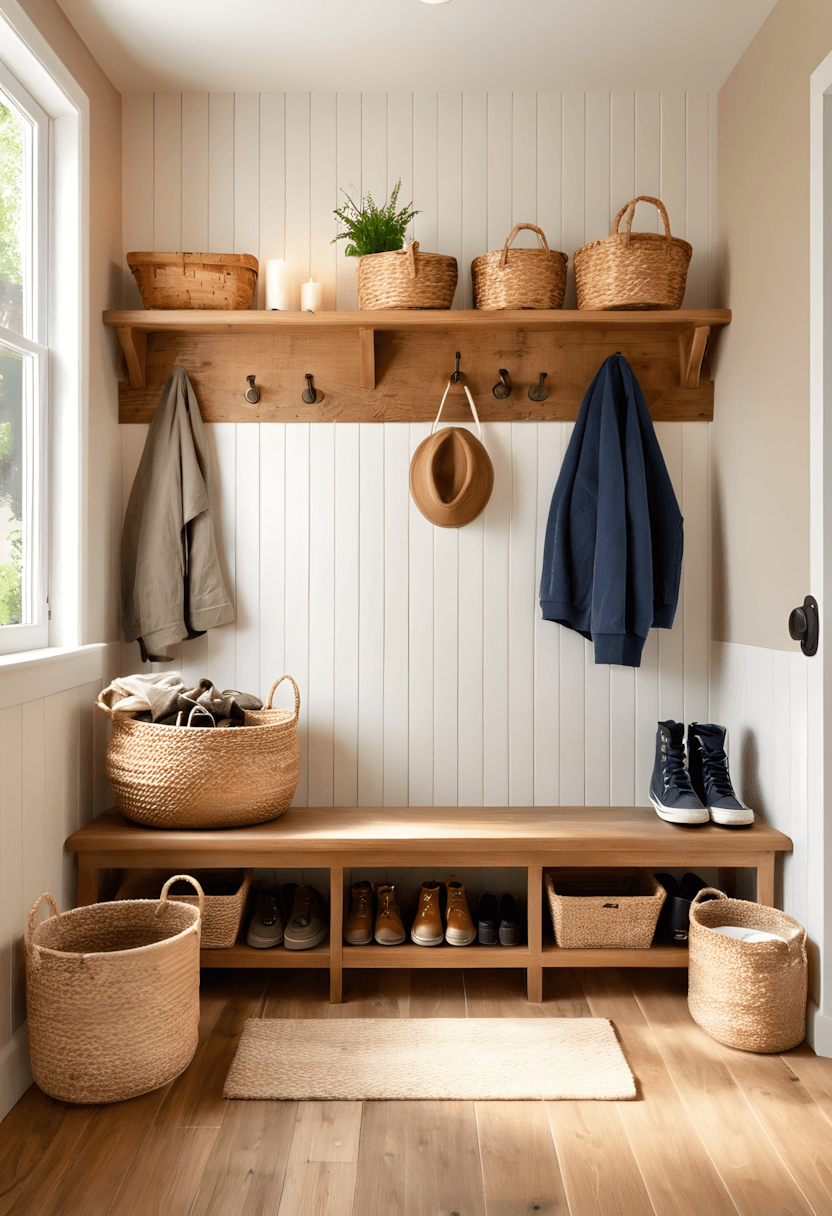
This mood-enhancing approach often appeals to homeowners understanding lighting’s impact on space perception and daily experience. Warm illumination typically creates welcoming environments that improve daily transitions.
Design benefit: Strategic lighting often makes spaces feel larger and more pleasant while ensuring adequate visibility for daily tasks.
Safety consideration: Proper illumination often becomes particularly important in transition areas where visibility affects safety during entry and exit.
Luxury Material Integration
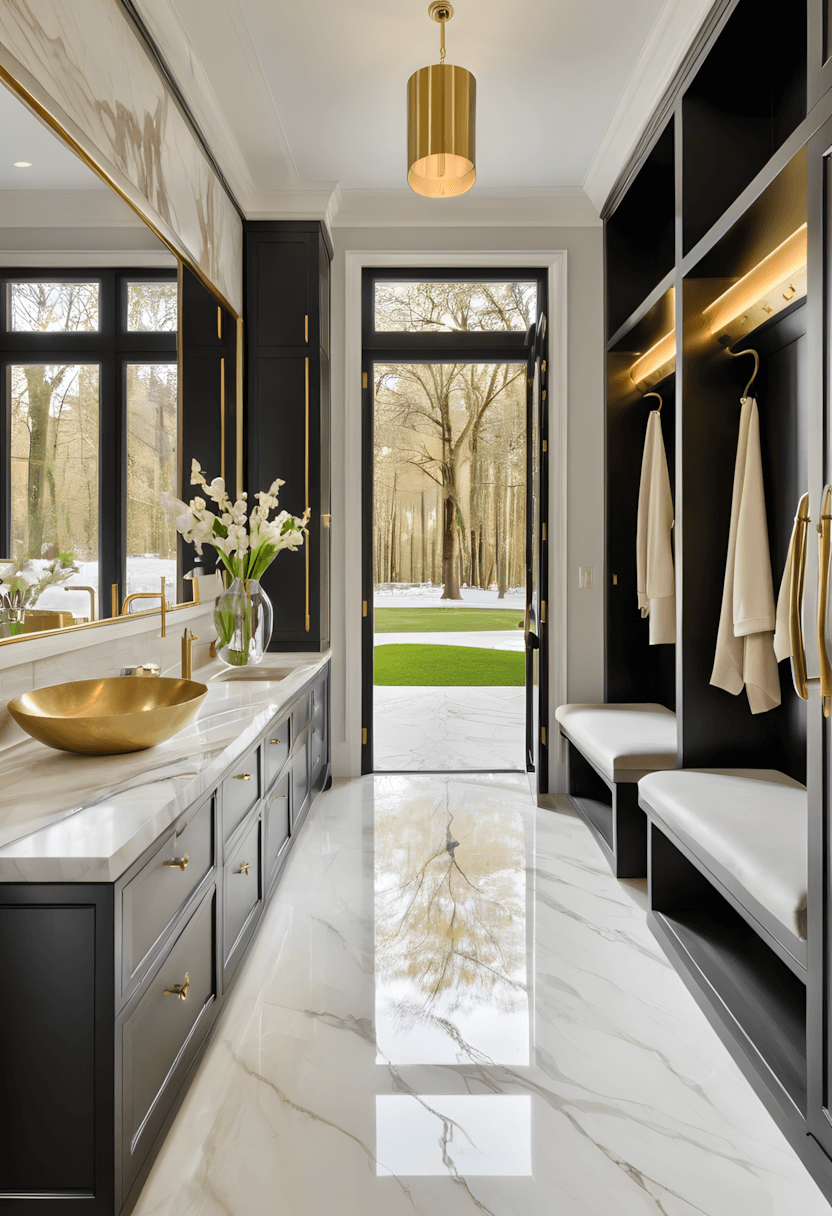
This upscale approach often works well for homeowners wanting sophisticated, high-end entryways. Premium materials like marble typically elevate utilitarian spaces while providing durability for high-traffic use.
Design sophistication: Quality materials often create lasting impressions while providing practical benefits for areas that receive heavy daily use.
Investment value: Premium materials often provide long-term value through durability and enhanced home appeal.
Rustic Barn Door Character
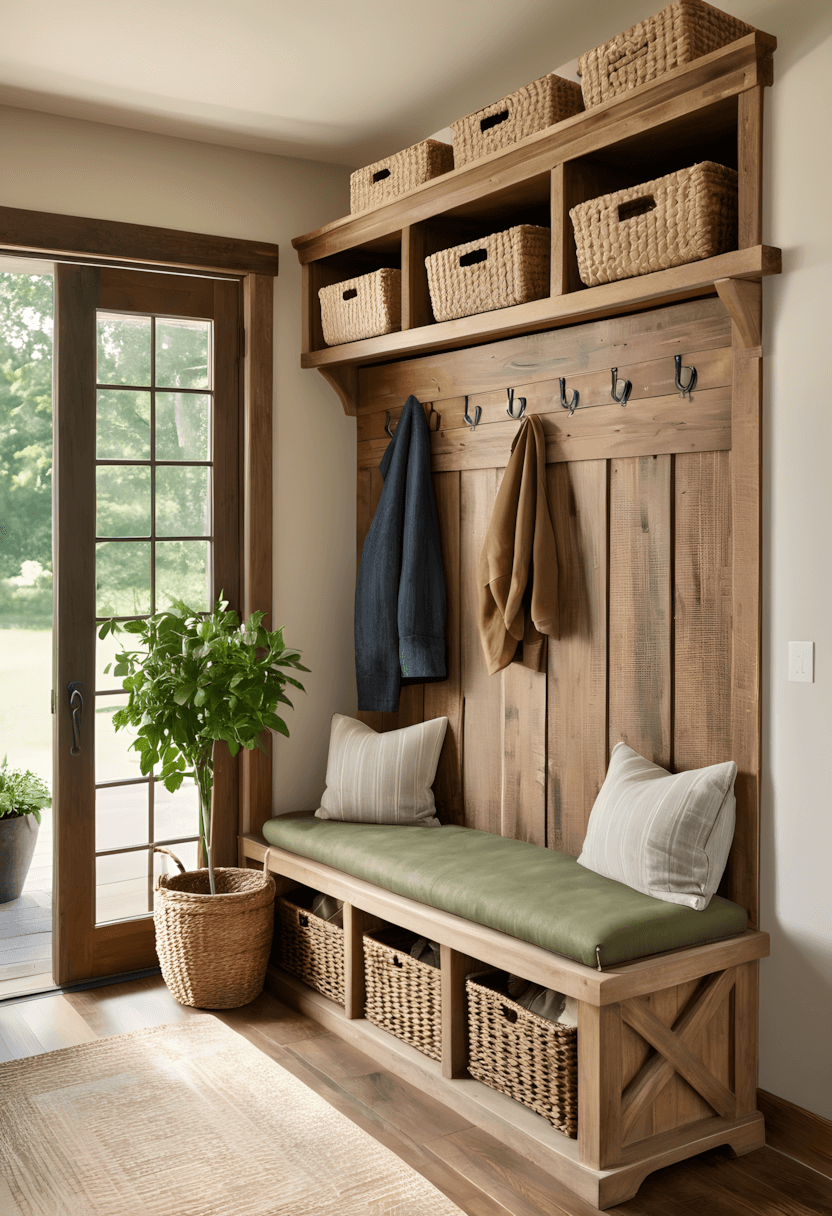
This distinctive approach often appeals to homeowners wanting unique architectural features with practical benefits. Sliding barn doors typically provide space-saving access while adding authentic rustic character.
Design impact: Architectural features often become focal points that provide character without requiring extensive decoration.
Space efficiency: Sliding doors often work particularly well in tight spaces where traditional swing doors would interfere with traffic flow.
Vertical Storage Optimization
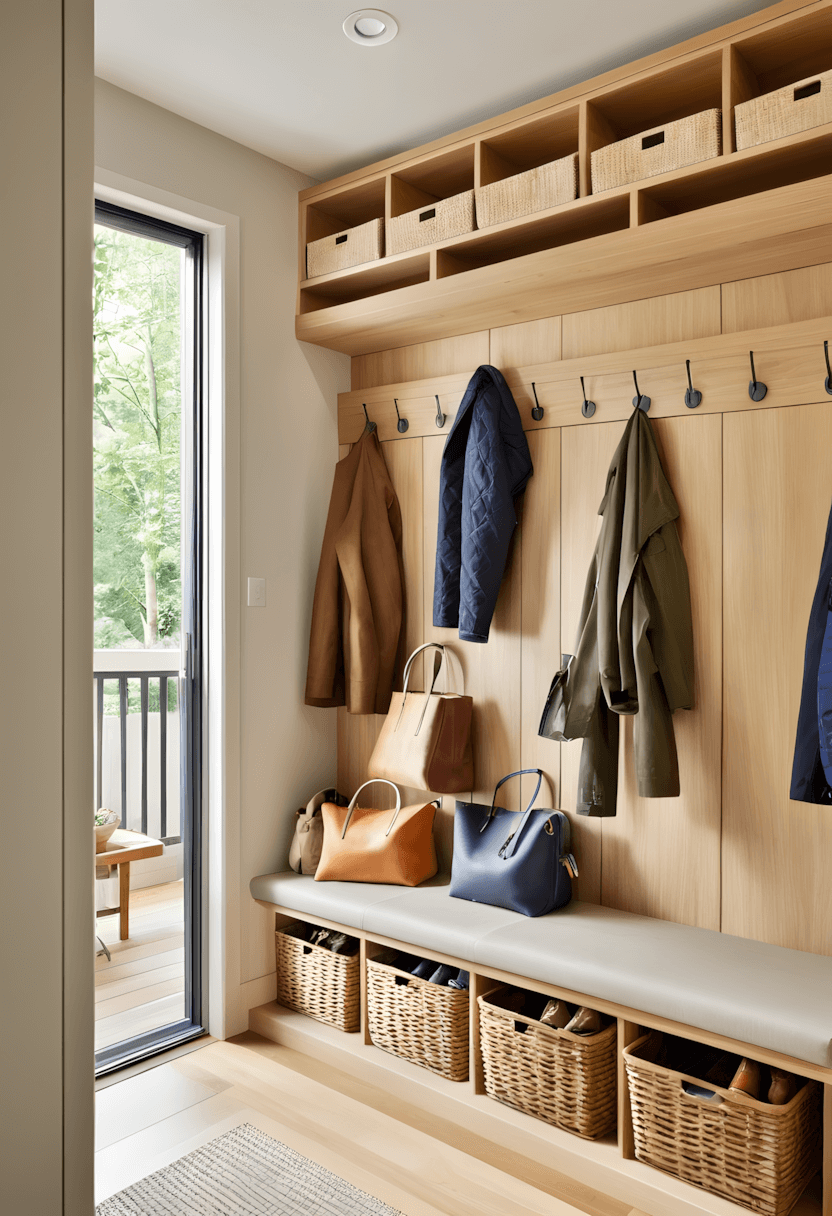
This space-efficient approach often works well for homeowners with limited floor area. Wall-mounted solutions typically maximize storage capacity while maintaining clear traffic patterns.
Design strategy: Vertical emphasis often makes spaces feel taller while providing substantial storage within minimal footprint.
Accessibility consideration: Strategic placement often ensures frequently used items remain easily accessible while seasonal items can be stored higher.
Mid-Century Modern Simplicity
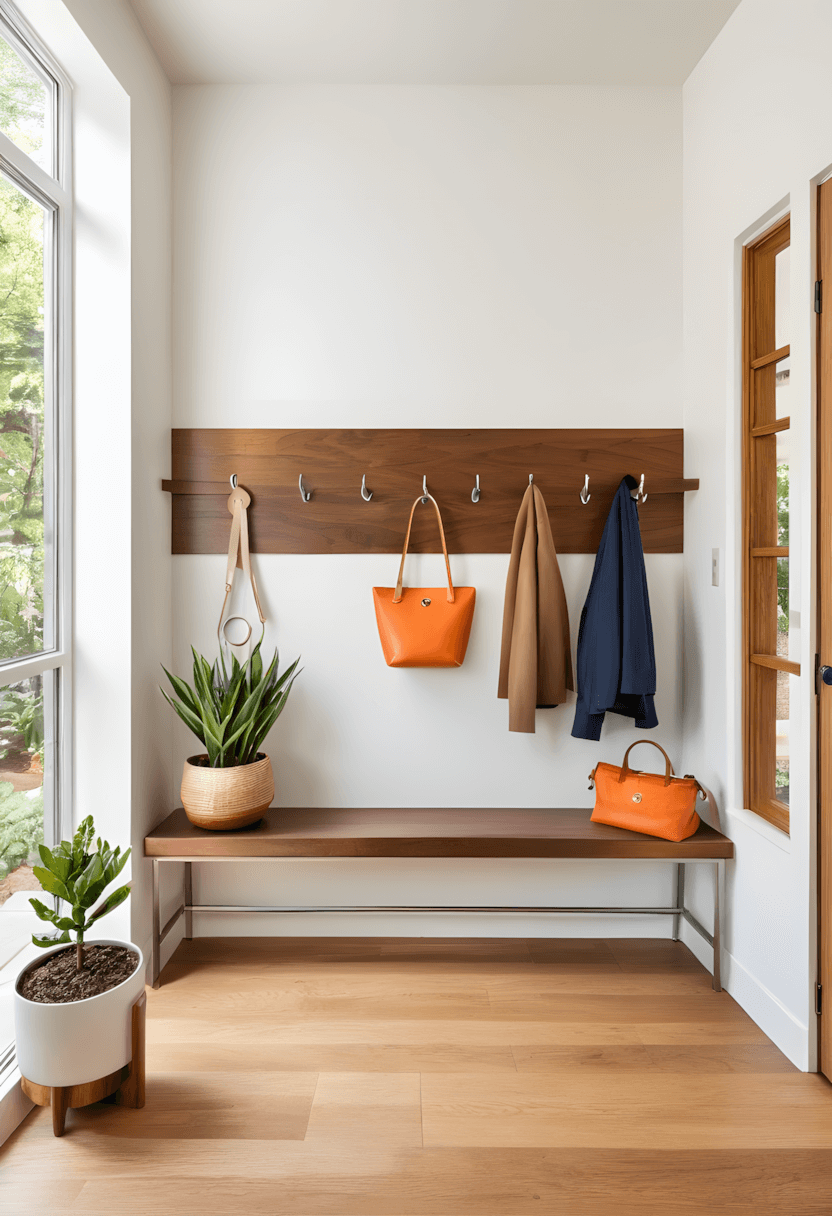
This clean approach often appeals to homeowners appreciating iconic design principles. Simple forms and bold accent colors typically create distinctive environments that feel both retro and contemporary.
Design authenticity: Period-appropriate elements often provide genuine mid-century character while accommodating contemporary storage needs.
Color strategy: Strategic accent colors often create personality without overwhelming the clean lines essential to mid-century aesthetics.
Coastal-Inspired Freshness
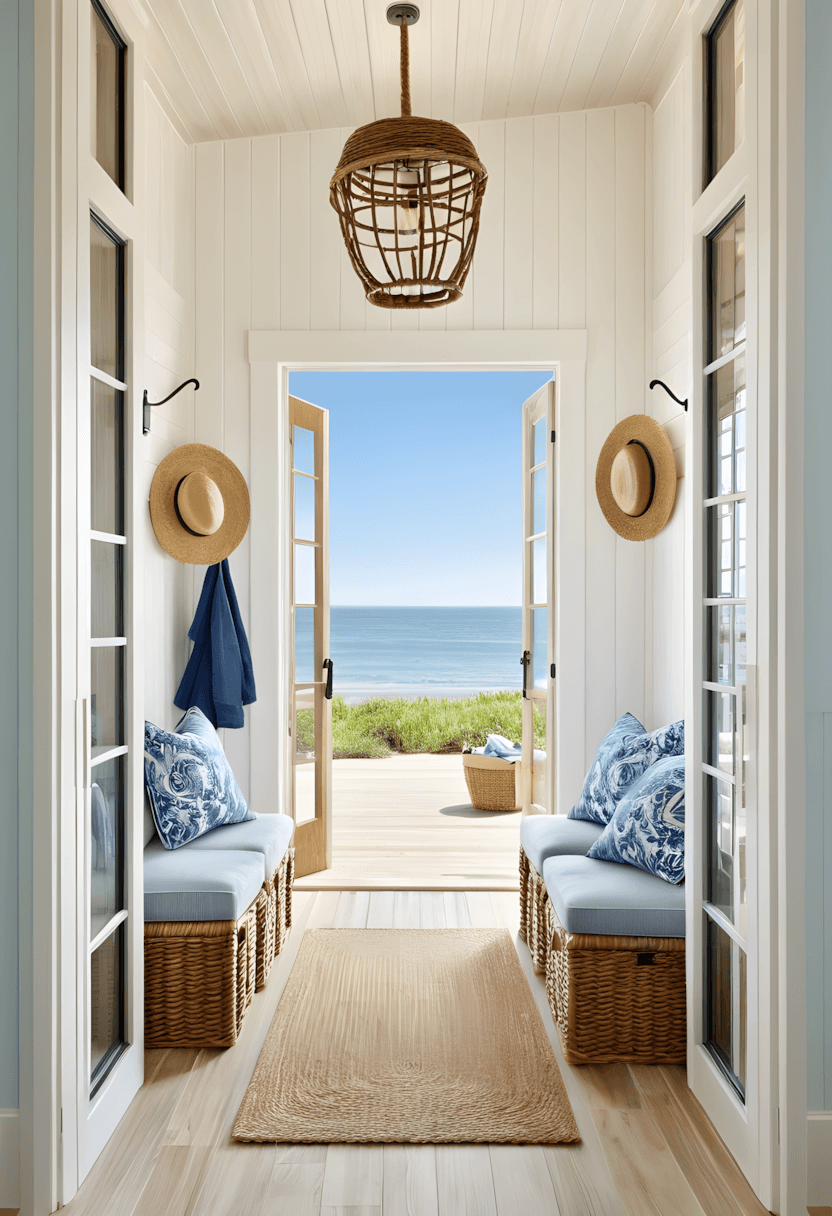
This relaxed approach often works well for homeowners wanting beach-inspired, casual environments. Light materials and nautical elements typically create vacation-like atmospheres in daily-use spaces.
Design harmony: Natural materials and coastal colors often work together to create cohesive themes that feel authentic rather than forced.
Atmosphere benefit: Coastal elements often create relaxed, stress-reducing environments that make daily routines more pleasant.
Family Locker Organization
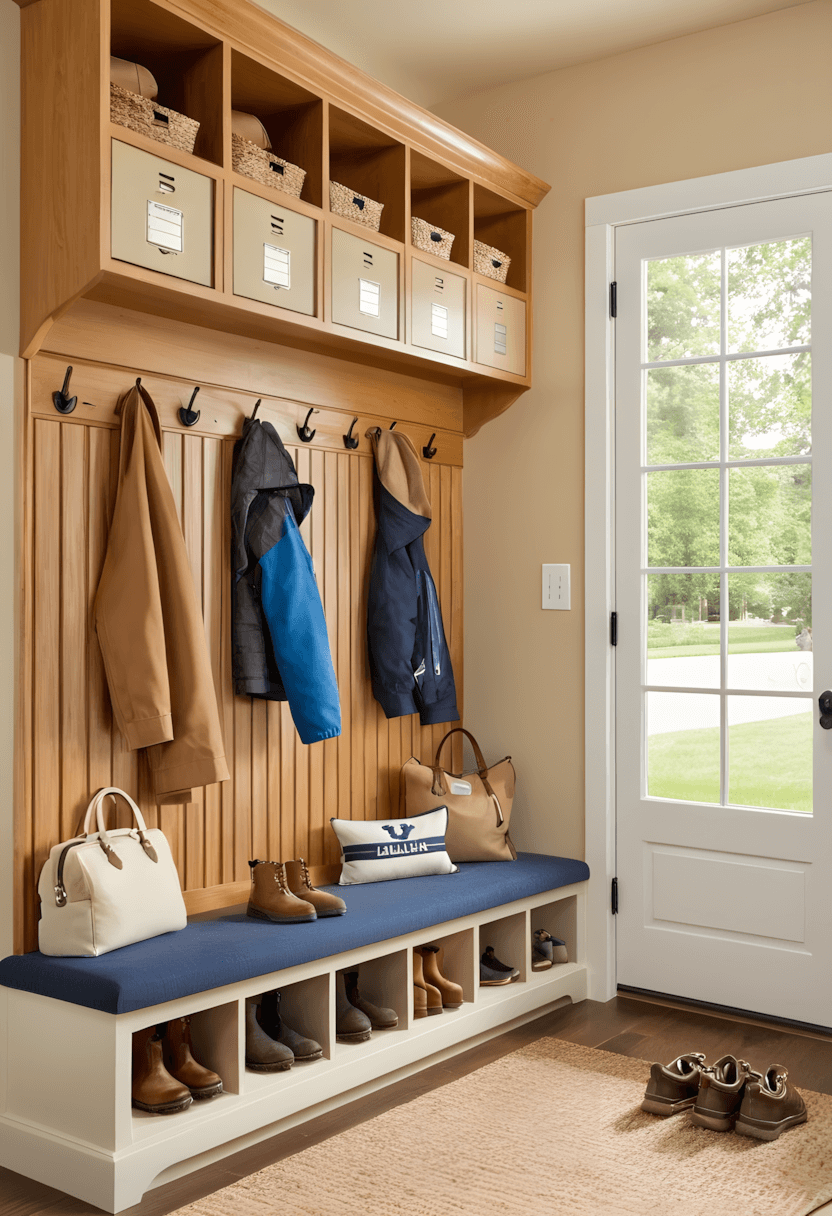
This systematic approach often appeals to families wanting individualized storage solutions. Personal storage areas typically provide accountability while maintaining overall organization.
Design benefit: Individual spaces often encourage family members to maintain their own organization while contributing to overall tidiness.
Practical advantage: Designated areas often prevent confusion and conflicts while teaching organizational responsibility.
Luxury Hardware Details
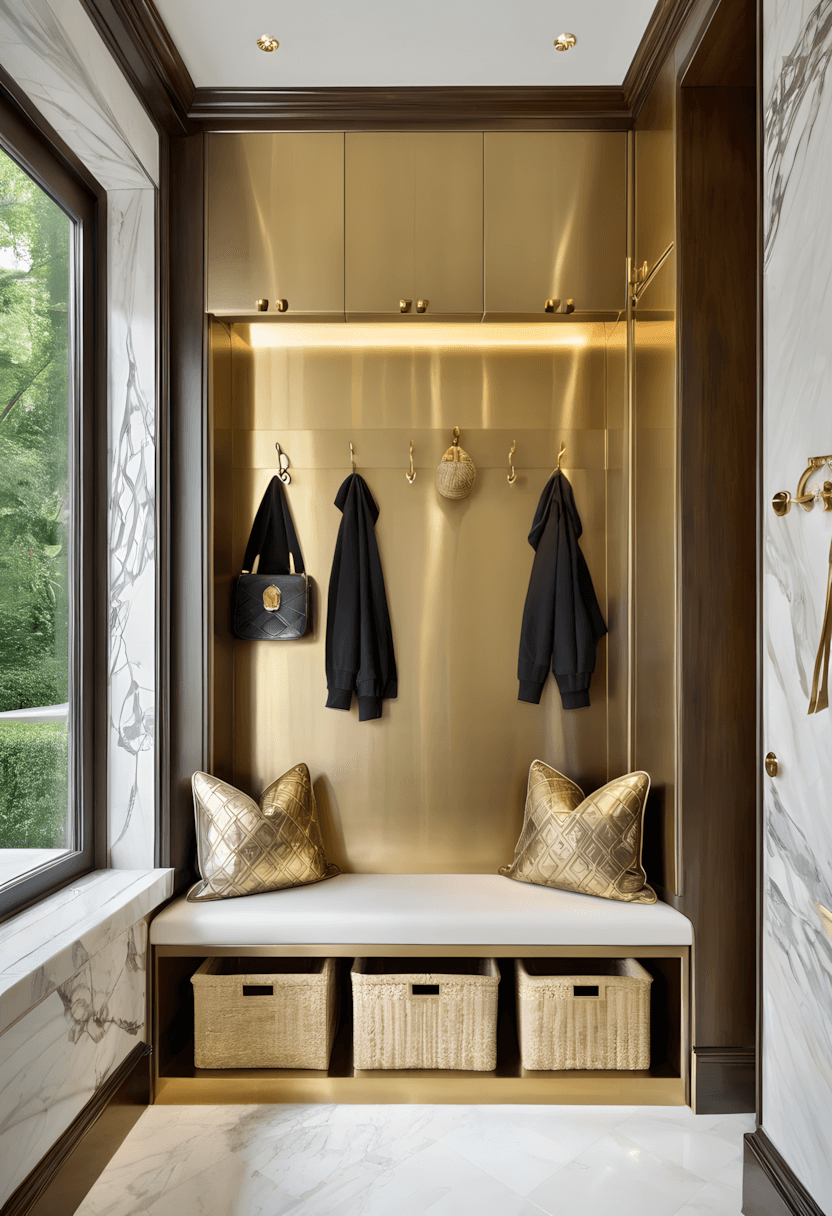
This refined approach often works well for homeowners wanting elegant finishing touches. Quality hardware typically elevates spaces while providing practical functionality that improves with age.
Design sophistication: Metallic details often add luxury appeal without requiring major investment while providing lasting quality and beauty.
Durability consideration: Quality hardware often withstands heavy daily use while maintaining attractive appearance over time.
Creative Floor Focus
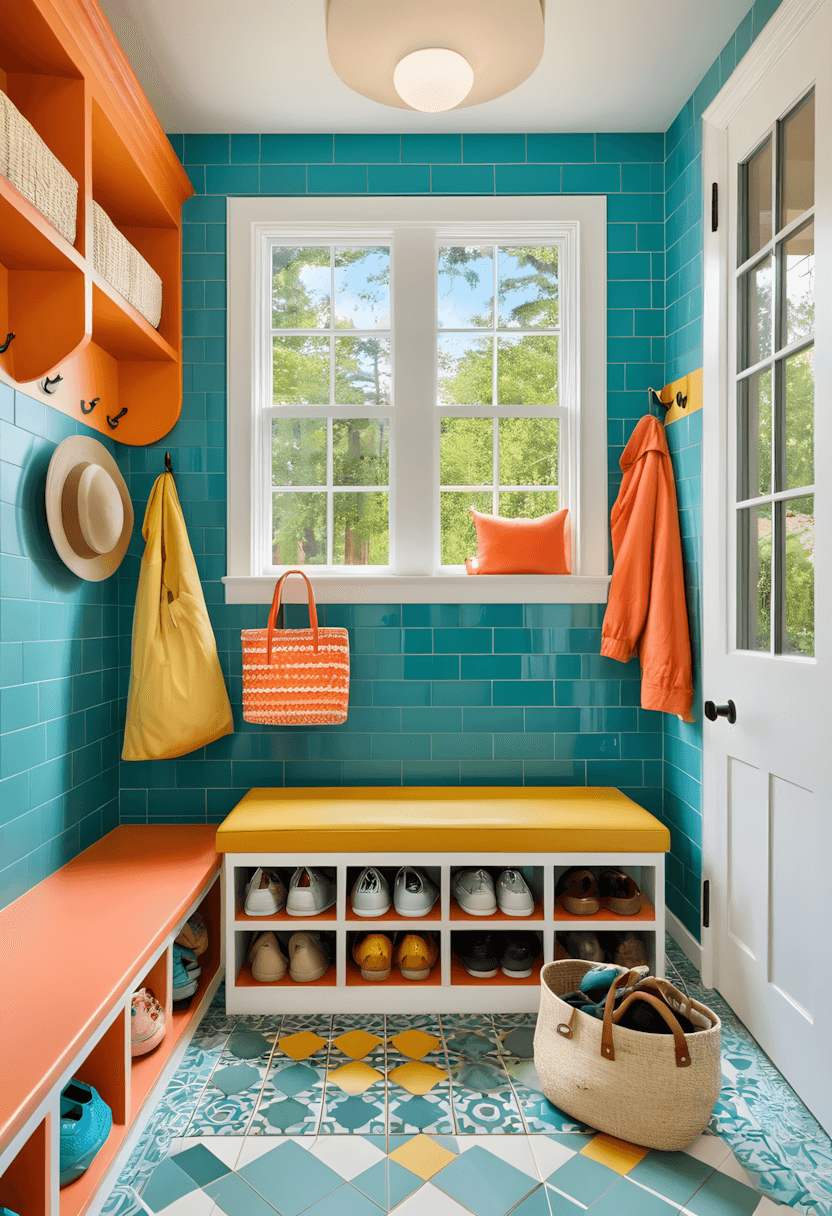
This bold approach often appeals to homeowners wanting distinctive design elements that serve practical purposes. Patterned or colorful flooring typically creates visual interest while providing durable, easy-maintenance surfaces.
Design balance: Bold floors often work best when coordinated with simpler wall and storage treatments to prevent visual overwhelm.
Practical benefit: Decorative flooring often hides dirt and wear while providing the durability necessary for high-traffic mudroom use.
Flexible Pegboard Systems
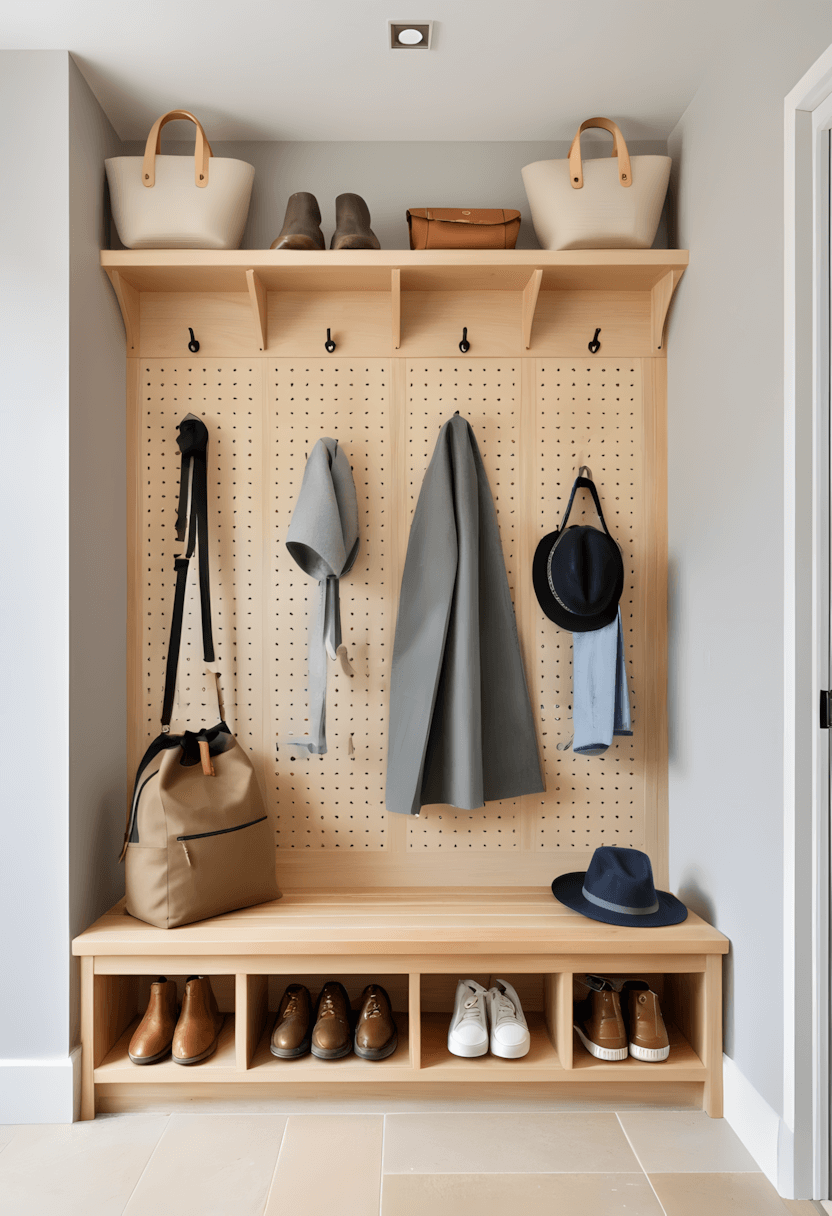
This adaptable approach often works well for homeowners wanting customizable storage that changes with seasonal needs. Pegboard walls typically accommodate various hooks and accessories for different organizational requirements.
Design flexibility: Modular systems often adapt to changing family needs while maintaining organized, efficient storage capabilities.
Cost effectiveness: Pegboard solutions often provide substantial storage capacity at budget-friendly prices while remaining easily upgradeable.
Hidden Under-Bench Storage
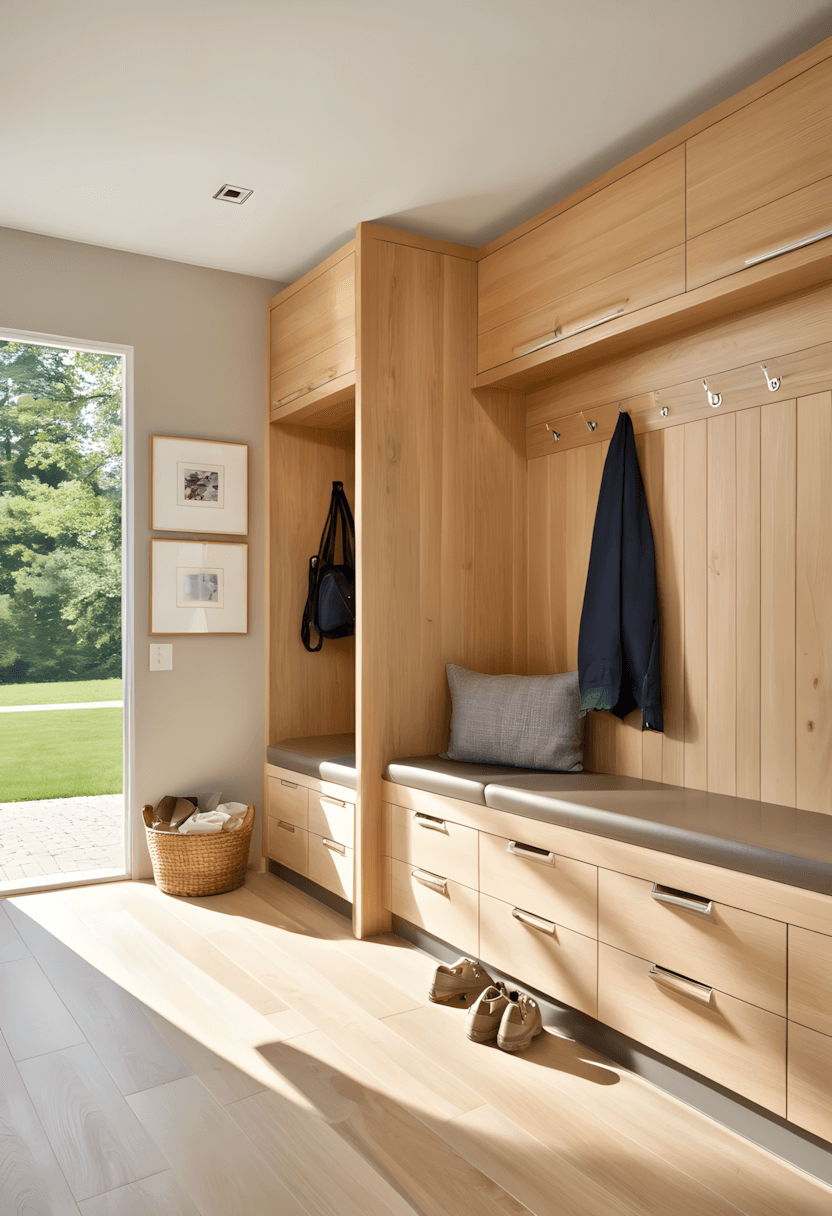
This clever approach often appeals to homeowners wanting maximum storage within minimal visible footprint. Concealed storage typically keeps spaces looking clean while providing substantial organizational capacity.
Design sophistication: Hidden storage often creates streamlined appearances while providing practical solutions for items used less frequently.
Space optimization: Under-bench areas often represent otherwise unused space that can provide valuable storage without impacting daily functionality.
Planning Effective Mudroom Layouts
Through various projects, I’ve observed that successful mudrooms often depend on understanding traffic patterns, storage priorities, and the relationship between different activities. Effective layouts typically accommodate peak usage times while providing clear organization systems that encourage consistent use by all family members.
Consider factors such as natural light availability, proximity to main entrances, and seasonal storage needs when planning mudroom improvements to ensure spaces work efficiently throughout the year.
Material Selection for Durability
Mudroom environments often require materials that withstand moisture, dirt, and heavy use while maintaining attractive appearances. Successful material choices typically balance durability requirements with aesthetic goals while considering long-term maintenance needs.
The most effective mudroom materials often improve with age and use rather than requiring constant replacement, making initial quality investments worthwhile for long-term satisfaction and functionality.
Remember: For any electrical work, plumbing modifications, or structural changes related to mudroom renovation, always consult with licensed professionals to ensure proper installation and code compliance.

